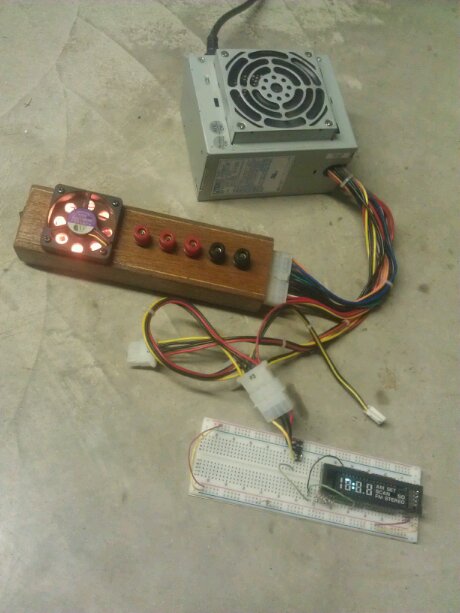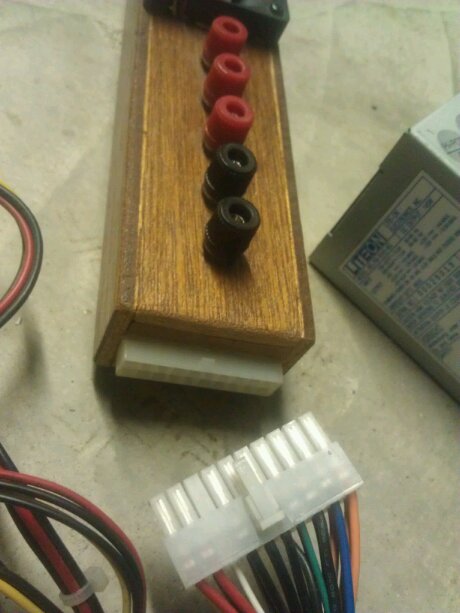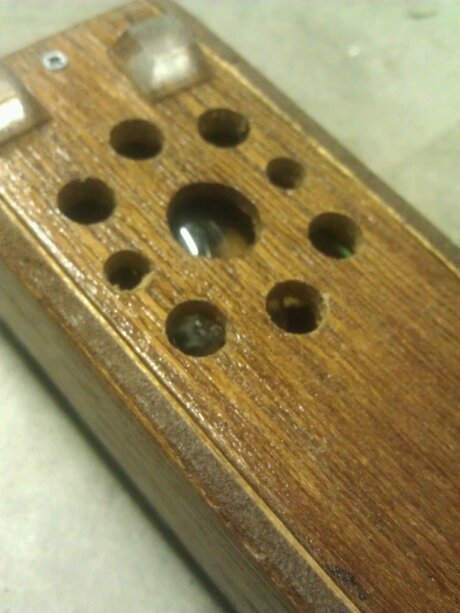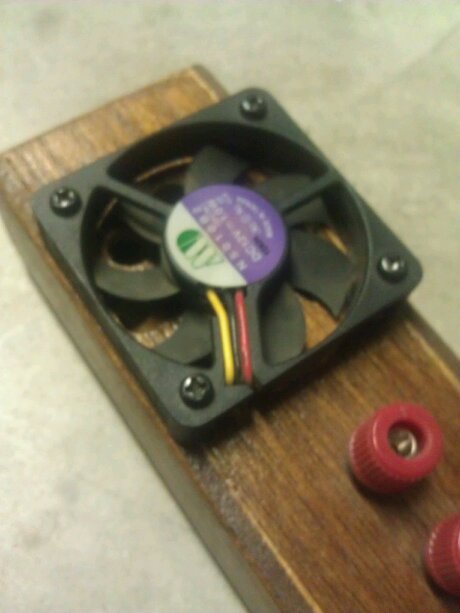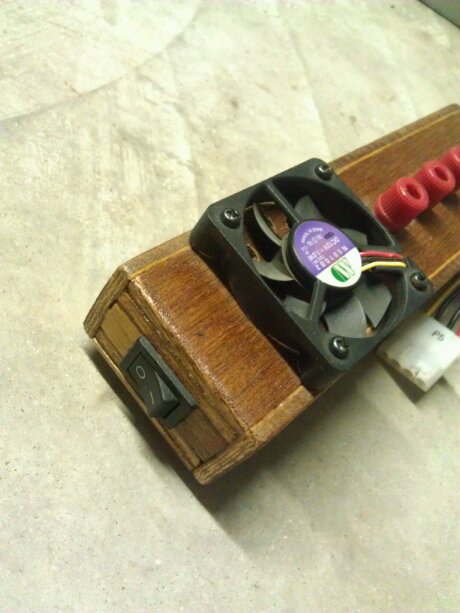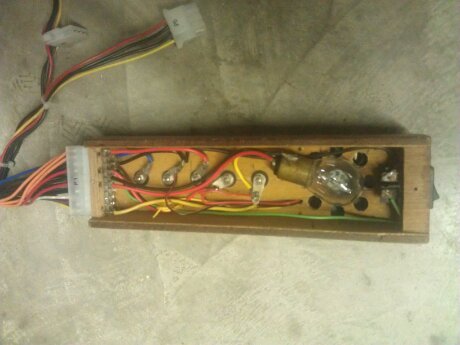ATX Computer power supply as benchtop power supply. These are quite common around the net, but this is mine with my favorite twist.
Ok, so this here is the very important feature that I think every ATX power supply based benchtop power supply should have: the ability to “break away.” This is a lesson I learned with the first tutorial I followed for adapting a PC power supply for benchtop use: I got all the binding posts, power switch, dummy loads, blah blah installed into the metal shell of the power supply, and all was smooth sailing.
But one day, something went wrong with the power supply, or maybe I blew it up with carelessness in my workbench uses, etc. So now what? Rip out all the binding posts, dummy resistors, get a new power supply, drill all new holes reinstall everything, aaaauuuuugh!! And what if the next power supply blows up? Repeat of all the nonsense.
So I decided that a better strategy was to make a little gadget box plug-in thingy that the ATX can be plugged, unplugged, replugged, replaced, all with just a quick clicking together of the power connector. No more wasting time disassembling the ATX power supply and retooling it with binding posts, etc. because it all stays on the outside, in the benchtop adapter unit.
Another thing is where on earth do you find the right kind of flameproof resistors to act as a dummy load for the power supply when you don’t have much (or maybe nothing, as in testing) drawing from it? You can certainly turn to online sources for the most exotic of components, but here’s one that is very nearby in almost any hardware or general store: The venerable 1157 auto taillight bulb. It contains a high and low filament, and you can use both of them, one on 12v and one on 5v. The only drawback, it gets hot. But so would a ceramic resistor.
Now, if you make your benchtop power supply adapter out of wood or other heat non-resistant material, you’ll need a fan to cool things. Since I already had old computer parts lying all around anyway, I just put a fan above the light bulb, with cooling holes top and bottom.
This switch tells the power supply to turn on. In the old days the switch was on the power supply itself on the back of the computer and a real pain to reach. So the PC makers provided a way for the power supply to be signaled to turn on through the motherboard, which means that one of the wires in the ATX connector is the signal wire to tell the power supply to turn on. Then the power button got to be on the front of the case and just went to a header on the motherboard. And then of course all kinds of things are possible like the bios telling the power supply to turn on at a certain time or schedule, or whether to stay turned off after a power outage, etc.
But this makes it necessary to put the power switch on the benchtop power supply adapter, which just makes the project even more fun. 😉
Here’s a shot of the insides. Not very complex.
